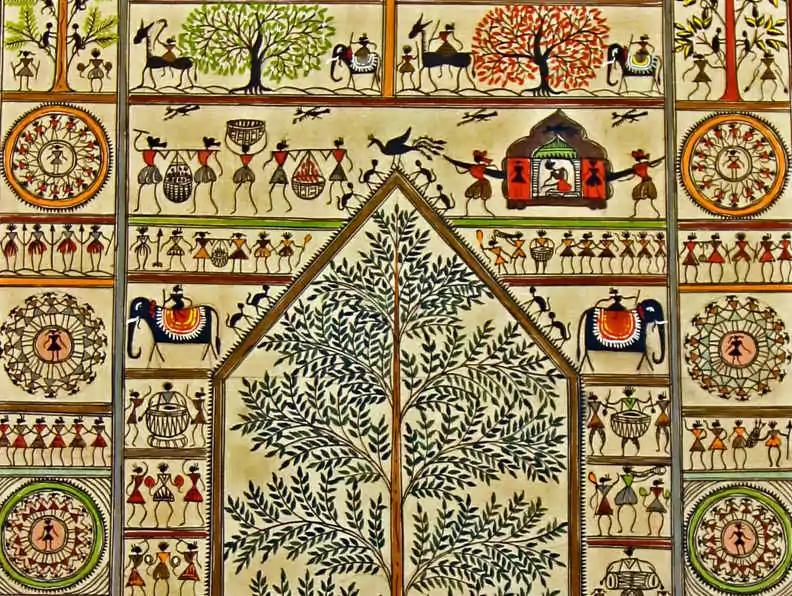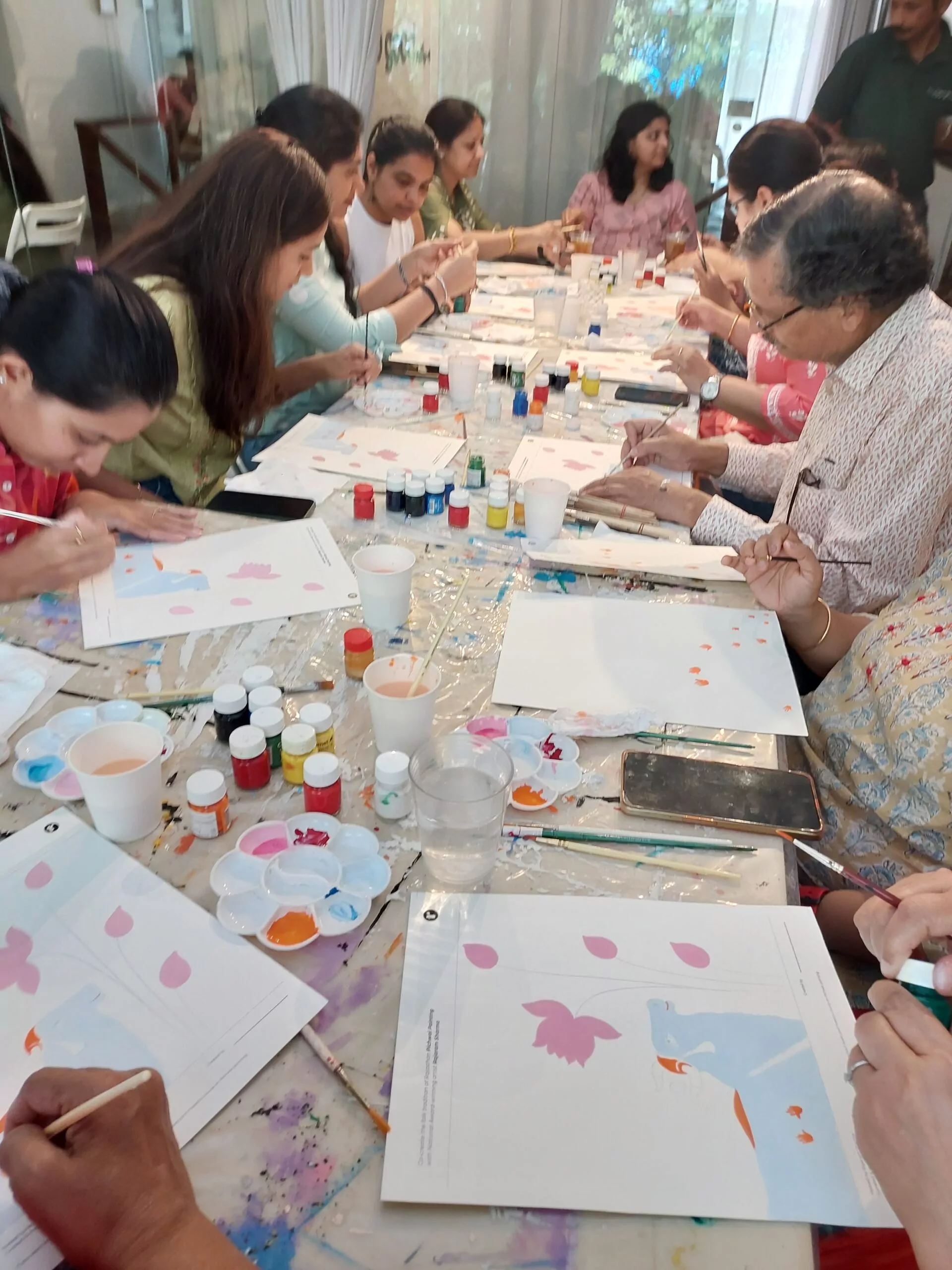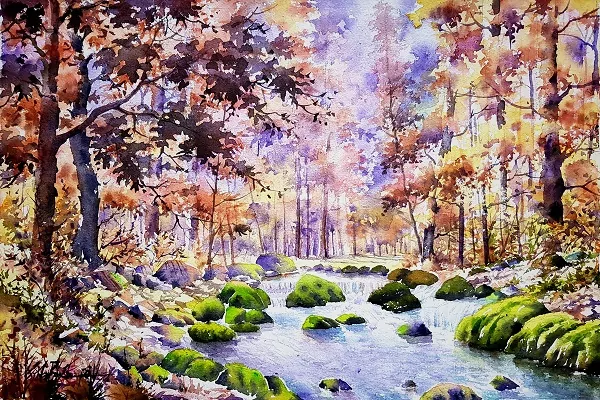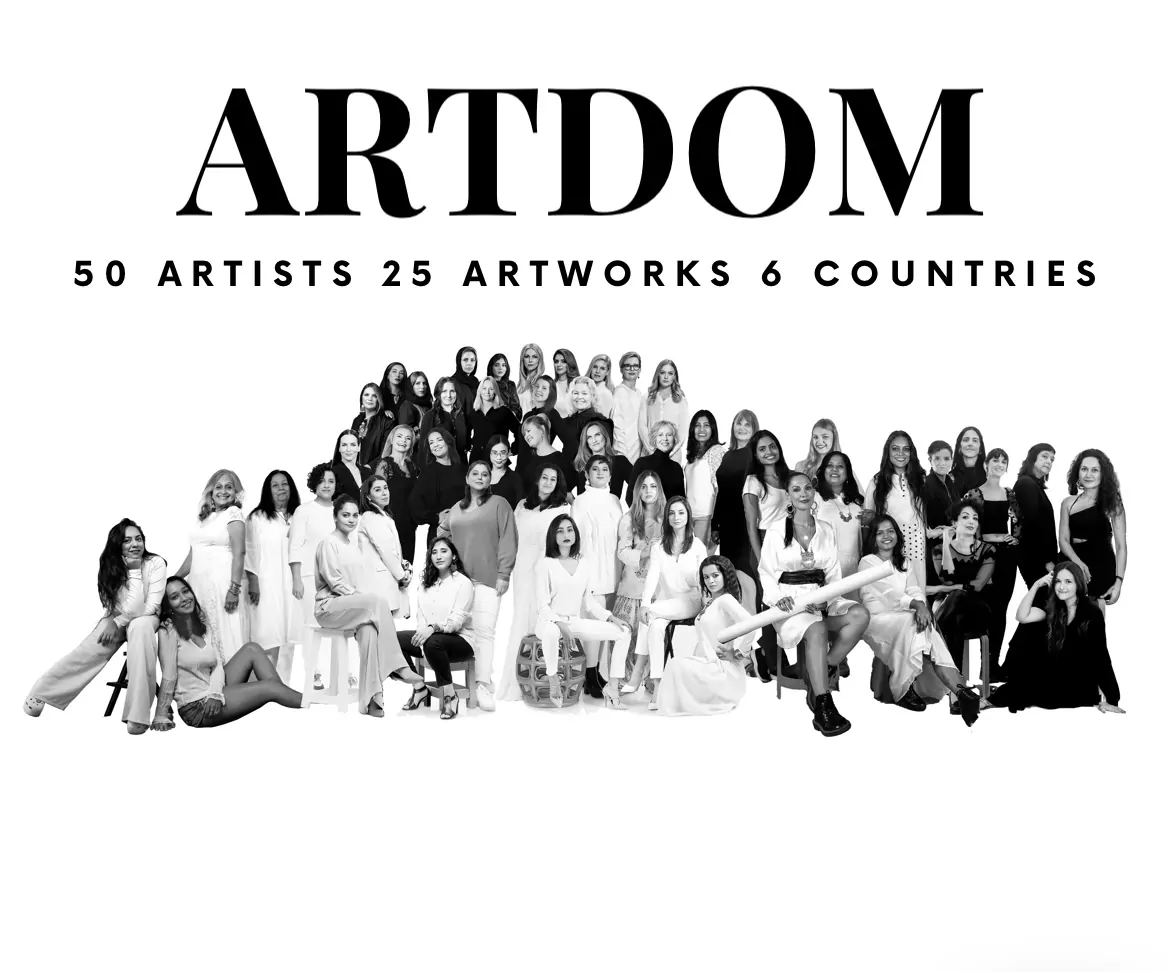When we talk about famous artworks, our mind immediately goes to the Mona Lisa by Leonardo Da Vinci or the Starry Night by Vincent van Gogh, but the perception and appeal of folk and tribal Indian art has steadily risen over the years and has quickly become one of the most sought after art styles across the globe. With 22 languages across 29 states, India has a rich cultural heritage that has given birth to several different art forms, each with its style, colour palette and influences.
The rise of tribal Indian art globally
India didn’t exist in the global art market until 1947 but folk and tribal Indian art dates back to 5000 years. So the question is, why was the global art community unaware of the beauty and charm of traditional Indian art? That’s because with the country under foreign rule for about 400 years, traditional Indian art didn’t get the exposure it deserved until 1948 when Bombay’s Progressive Artist Group was formed.
Six prominent figures laid the foundations for the exposure of Indian art globally, namely F. N. Souza, S. H. Raza, M. F. Husain, K. H. Ara, H. A. Gade and S. K Bakre. Since then, Indian art has never looked back and artists from the country have regularly seen their work sold at prestigious institutions such as Christie’s for millions of dollars. An untitled painting from V.S Gaitonde was sold for a whopping 29 crores INR (approximately 4.1 million dollars) while another painting named ‘Birth’ was sold for 26 crores INR.
Access to folk and tribal Indian art
Learning folk and tribal Indian art has never been more accessible across the globe. Through the Rooftop app, available on both Android and Apple’s App Store, you can simply learn from award-winning maestros through expertly curated workshops and courses from anywhere and anytime. The modules don’t just encompass learning how to create art, it also gives a background about the history of the art styles to get a better understanding of what makes each of them truly unique. This not only changes the preconceived notions about traditional Indian art forms globally but is also elevating their status in the global marketplace.
Folk and tribal Indian art is a brand in itself and every successful brand needs to be built on strong foundations. This requires support from both the government and private players to get traditional Indian art the due recognition it deserves globally. Collaborating with global galleries, seeking a presence for artists at museums, and inviting internationally-acclaimed critics and curators to Indian art summits are all steps that must be taken to elevate Indian art globally.
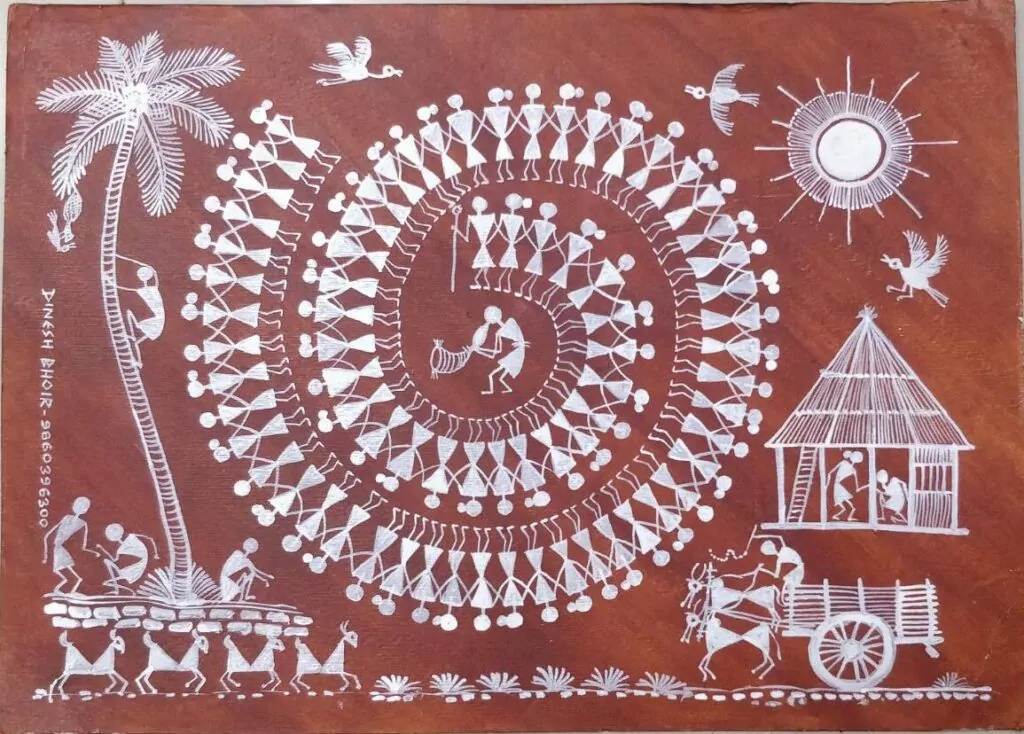
The demand for Indian art globally
According to Yamini Mehta, the international head of Indian and South Asian Art at auction house Sotheby’s, the global market for folk and tribal Indian art has “never been more vibrant”. There has been a growing trend in looking for underrepresented or undervalued Indian artists who are getting critical reappraisal in museum exhibitions and academic publications. These institutional exposure opportunities are giving credibility and confidence to collectors to invest in traditional Indian art.
When we take Sotheby’s sales figures over the last five years, Indian clients have purchased artwork for an estimated $273 million and the number of bidders has increased by 7% from 2014 to 2015. Moreover, wealthy Indians who wish to invest heavily in art are more likely to buy from the country itself due to the Antiquities Act (1972) which states that acquiring art that is over 100 years old can never be exported. This means that an owner will be limited to selling their investment within the country itself, which has shifted their focus on traditional Indian art forms rather than more established and world-renowned artists.
Conclusion
In conclusion, while the appeal of folk and tribal Indian art is on the rise, there is a long way to go before these centuries-old art forms are considered mainstream globally. India’s rich cultural heritage gives the country an advantage because of its diverse range of traditional art styles and its centuries-old traditions are what sets it apart from the already established Western art forms. It’s only a matter of time before Indian art gets the respect, attention and investment it deserves globally, until then, its preservation must remain the highest priority.
Download the Rooftop App from GooglePlay or AppStore and enroll in our maestro courses!
Discover us on Instagram @rooftop_app for all things on traditional Indian art.

